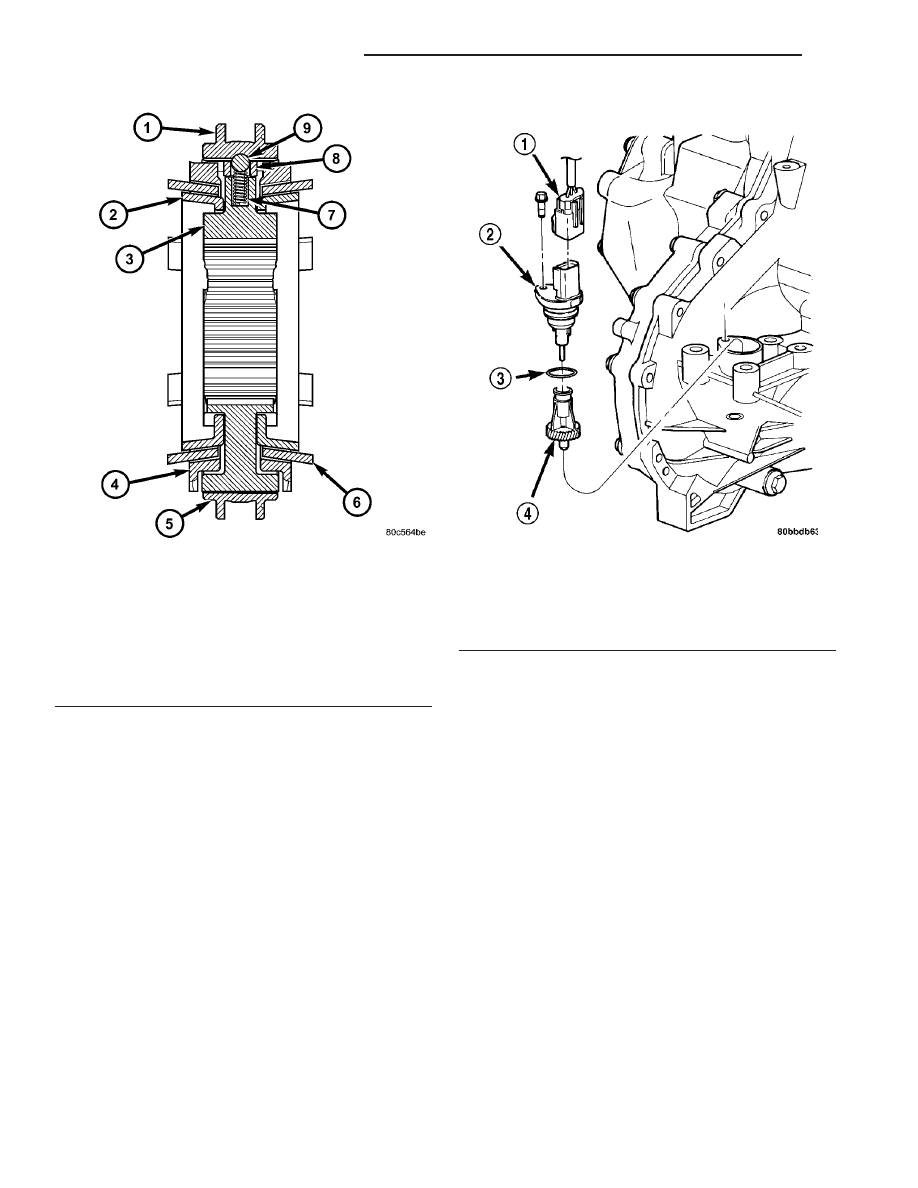Chrysler RG Voyager. Manual - part 525

ASSEMBLY
(1) Position synchronizer hub onto work bench.
Hub is non-directional.
(2) Install springs into hub slot.
(3) Insert key into hub and spring.
(4) Apply petroleum jelly to the hole in the key.
Insert balls into each key.
(5) Slide sleeve over the hub and depress balls as
you carefully slip the sleeve into position.
VEHICLE SPEED SENSOR
REMOVAL
(1) Raise vehicle on hoist.
(2) Disconnect the speed sensor connector (Fig.
299).
CAUTION: Clean area around speed sensor before
removing to prevent dirt from entering the transaxle
during speed sensor removal.
(3) Remove speed sensor retaining bolt (Fig. 299).
(4) Remove speed sensor from transaxle.
CAUTION: Carefully remove vehicle speed sensor
so that sensor drive gear does not fall into trans-
axle. Should sensor drive gear fall into the trans-
axle during sensor removal, drive gear must be
reattached to sensor.
(5) Remove speed sensor drive gear from speed
sensor.
INSTALLATION
(1) Install pinion gear to speed sensor (Fig. 299).
(2) Using a NEW o-ring, install the speed sensor
to the transaxle (Fig. 299).
(3) Install the bolt and torque to 7 N·m (60 in.
lbs.).
(4) Connect speed sensor connector (Fig. 299).
(5) Lower vehicle and road test to verify proper
speedometer operation.
Fig. 298 1/2 Synchronizer Assembly
1 - SLEEVE
2 - REACTOR RING (2)
3 - HUB
4 - BLOCKER RING (2)
5 - SLEEVE
6 - FRICTION CONE (2)
7 - SPRING (3)
8 - KEY (3)
9 - BALL (3)
Fig. 299 Speed Sensor and Pinion Removal/
Installation—Typical
1 - CONNECTOR
2 - SENSOR
3 - O-RING
4 - GEAR
21a - 122
T850 MANUAL TRANSAXLE
RG
SYNCHRONIZER (Continued)